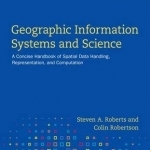Geographic Information Systems and Science: A Concise Handbook of Spatial Data Handling, Representation, and Computation
BookThis item doesn’t have any media yet
2016 | Science & Mathematics
Geographic Information Systems helps students understand how GIS enables us to digitally represent the forms, patterns and processes of Earth. The text demonstrates how the special qualities of spatial geographic data require new methods and theories, and how these new methods and theories embody the field of GIScience that underlie the technology of GIS. Designed for users already familiar with GIS, it takes students beyond the surface of the technology by explaining methods and algorithms in enough detail for students to get an intuitive grasp of the underlying ideas while also demonstrating how those ideas are applied to geographical information. In order to help students become more effective users of GIS technology, the book highlights many of the common research challenges of GIS and invites the reader to think broadly about the assumptions embedded in GIS practice today. The authors stress a critical approach throughout by describing selected aspects of the field in sufficient depth to scrutinize the formalisms underlying the simple user-interfaces that greet new GIS users.
Geographic Information Systems serves as an indispensable gateway to higher study in GIS by readers interested in the fundamental research challenges facing the field today.
Related Items:
| Published by | Oxford University Press, Canada |
| Edition | Unknown |
| ISBN | 9780199003631 |
| Language | N/A |
Images And Data Courtesy Of: Oxford University Press, Canada.
This content (including text, images, videos and other media) is published and used in accordance
with Fair Use.
